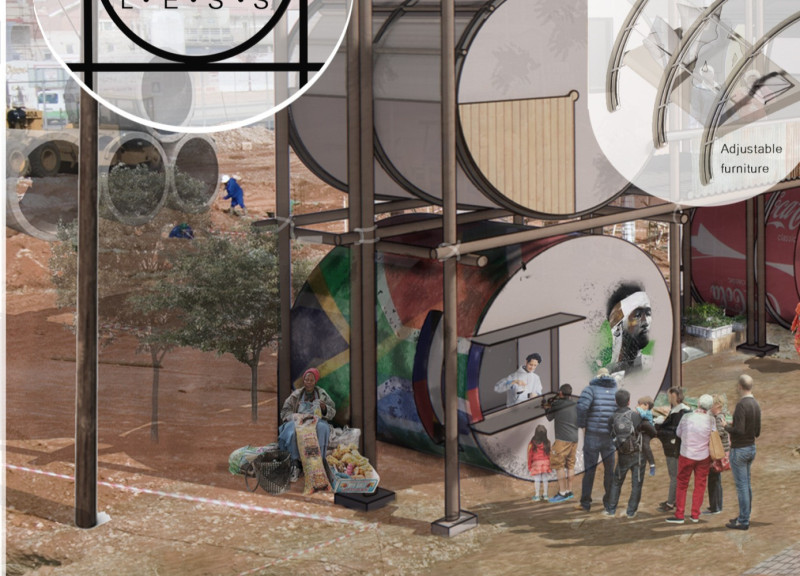5 key facts about this project
The micro home is designed to tackle the challenges of urban living in South Africa. Set in densely populated cities, it serves both as a place to live and work, emphasizing community engagement. The design concept focuses on connectivity and sustainability, encouraging social interaction while promoting local economies.
Connectivity and Community Engagement
The micro home is structured to link with nearby communities, helping to boost local economic development. It features a communal area shaded by a movable device, which allows residents to gather and interact. The arrangement of spaces encourages clustering, making it easier for the public to engage with one another in a shared environment.
Sustainability in Design
Sustainability plays a key role in the design of the micro home, which is constructed using recyclable materials. Important materials include 3D printed concrete, plastic cylinders, corrugated iron sheeting, and recycled gum poles. The home incorporates systems for collecting and filtering water, as well as managing temperature. These features are designed to enhance its self-sufficiency, aligning with modern urban planning practices.
Adaptability and Cost-Effectiveness
This micro home is built for adaptability and cost-effectiveness. It can be easily purchased and installed on-site, avoiding the need for extensive construction. The structure is designed to rest on concrete footings, allowing it to fit different terrains. Inside, the layout allows for furniture to be moved, enabling spaces to be tailored for both living and working.
Aquaponic System Integration
The micro home includes an aquaponic system, which allows residents to grow their own crops and vegetables. This feature supports sustainability and contributes to food security in urban areas. By integrating local food production, the design seeks to address community needs while promoting resilience.
The project provides a functional approach to combining living and working spaces. The design is thoughtful and responds to the needs of urban residents, balancing ecological concerns with social connectivity. Its choice of materials and layout creates a practical urban dwelling tailored for modern city life.



















































